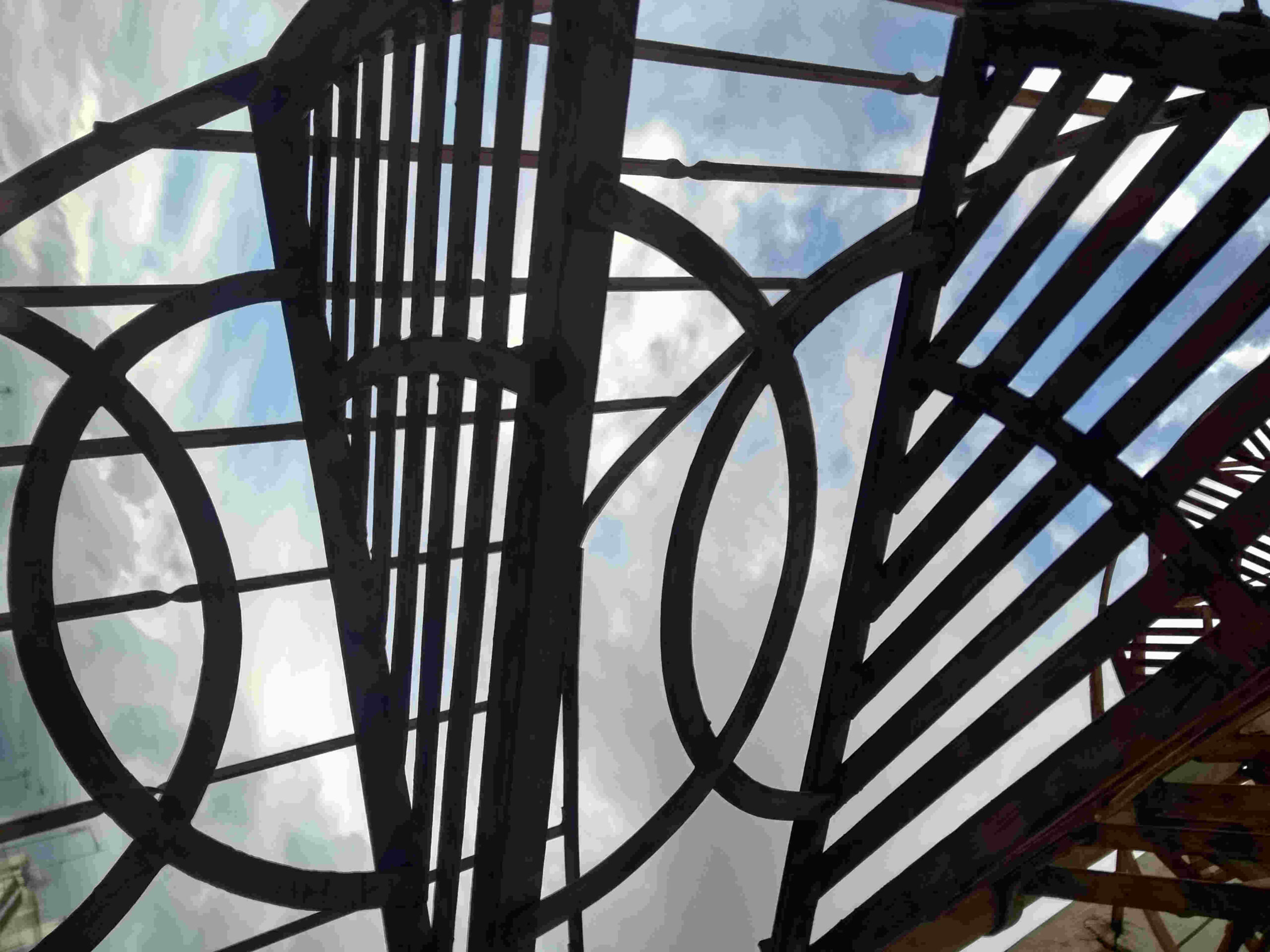Whilst this analysis so far has sought to address the oscillations of the Devotional Wallpaper through theories and philosophies of modernist art and music, I want to try to understand the ways in which these logics may be perceived to be at work within the auditory realm, in the relay between speaking and listening, so as to try to deduce some ways in which these logics can be appreciated as organising auditory perception. To do this, I want to return to the oscillations of the mask that Houston Baker bases his deconstruction of modernist form upon (Baker 1987), which may be heard as playing out through Sonia Boyce’s Good Morning Freedom print.
When minstrelsy was an acceptable form of supposed entertainment, what was ascribed as the spoken dialect of the figure of the minstrel by and for a racist white audience was seemingly nonsensical noise (Baker 1987: 43). Baker explains,
…the sound emanating from the mask reverberates through a white American discursive universe as the sound of the Negro. If it is true that myth is the detritus of ritual, then the most clearly identifiable atavistic remains of minstrelsy are narratives or stories of ignorant and pathetically comic brutes who speak nonsense syllables (Baker 1987: 22 emphasis in original).
Baker addresses this ‘minstrel dialect’ from various angles. When spoken by a “white body” in place of a “black body”, for example in historical white plantation texts such as Satanstoe (Cooper 1845) and Uncle Tom’s Cabin (Stowe 1852), the trade in “syllabic idiocies” attributed to the white authors’ black characters are what Baker calls “white dada at its most obscene” (Baker 1987: 22 emphasis in original). These syllabic idiocies, uttered by white authors for their black characters, have, historically and hegemonically through white supremacy been assigned the status of nonsensical noise through the intentional narrative function of this particular speech act, through a dialectics of domination/subordination. In this regard, the “white dada” as the master discourse can be perceived as an attempt at a “total speech situation” (Butler 1997: 3) embedded with an implicit intention to invoke at the moment of the utterance certain asymmetrical effects. The intention in this speech act is to set the limits of intelligibility, of what such a sound can and should mean, should signify as, by asymmetrically aligning the syllabic utterances as nonsense in a dialectical relation of sense/nonsense. In this way the syllabic utterance, the “sound emanating from the mask” (Baker 1987: 22), is historically stripped of any linguistic agency or potency. In racist Western societies, such an inscription as ‘nonsensical noise’ has then often been assumed as an essential characteristic, as Baker explains, “through a white American discursive universe as the sound of the Negro” (Baker 1987: 22). In this way, asymmetrical constructions of black/white and time/space can be heard as the dialectical relations of lord and bondsman embedded in historical performances of the minstrel mask. Whiteness is reinforced as the sensible, abstracted and superior ideal through the appropriation of “the sound emanating from the mask” as one whose meaning is inscribed through “narratives or stories of ignorant and pathetically comic brutes who speak nonsense syllables” (Baker 1987: 22 emphasis in original). Within this historical apparatus of racialised thinking, the dominant construction of whiteness is hierarchically dependent upon the subordinate performance of blackness, a relation which can be heard to play out through the sound of the minstrel mask whose parameters of noise, sense and nonsense have been inscribed by a dominant order intent upon denying any form of self-definition or agency for African-American culture. The mask is an ideal trope for such a dialectical relation in its ability to both expose and hide the meanings contained within its spheres of operation.
The dialectics of the mask that Baker’s theorising demonstrates – which may also be perceived as a critical oscillation in Boyce’s Good Morning Freedom print – can be appreciated as pre-cursors to the concepts and processes embedded within what Jonathan Sterne analyses as “predictive coding, based on speech models” (Sterne 2012: 113-4). As Sterne explains, the elements of speech that were to be reproduced through technologies such as the telephone, vocoder and gramophone that “turned out to be too noisy” (Sterne 2012: 113-4), were eliminated from technological sound reproduction through the application of theories of auditory masking. This reflects one of the historical evaluations of noise as “unwanted sound”, as noise to be silenced, which, as Sterne explains, when considered “at its extreme could be a threat to the social order, often because it was tied to unwanted populations, or to the discomfort of relative elites” (Sterne 2012: 108). In this way the valuation and therefore possible elimination of technological noise can be appreciated as being linked with the definition and control of social noise. Both ideas, the sociopolitical and the technological, are based upon technologies of masking that have sought to demarcate the parameters for “whose noise matters, whose immediacy-pressures rule the tendency of the situation – who controls the zoning” (Berlant 2011: 230).
